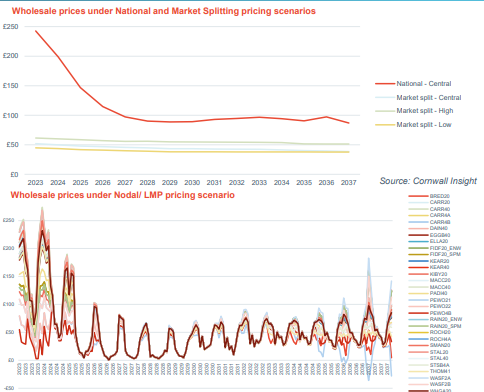Energy Systems Catapult (ESC) has commissioned Cornwall Insight to deliver network and energy market modelling for assets in the UCEGM region

As part of the Unlocking Clean Energy Greater Manchester (UCEGM), the Energy Systems Catapult (ESC) has commissioned Cornwall Insight to deliver network and energy market modelling for assets in the UCEGM region.
Nationally, the modelling team took our existing wholesale power price forecasts and developed two new models: a locational marginal pricing model, and a market splitting model, to reflect two possible future GB energy market paradigms. Regionally, the modelling team mapped out the UCEGM, including the precise network assets in the region, demand and generation sources, and then introduced new generation and electricity storage assets to test the economic benefits of deploying these. This report, and the accompanying data book, provide key takeaways from this modelling exercise.
Modelling
 We modelled three types of wholesale market: –
We modelled three types of wholesale market: –
- National markets, on the current paradigm of a single price for all generation and consumption
- Locational Marginal Pricing (LMP), looking at electricity prices for each of the ~380 Grid Supply Points (GSPs) with these differing during times when connection between the points
- Split markets, with a base/ fixed price for intermittent renewable generation and marginal prices for renewable generation
Method
- Prices were modelled to an hourly granularity
- Generator revenues and consumer costs for wholesale power are the same, with network charges and other third-party costs (TPCs) modelled separately
- These prices are fed into the regional network model to inform generation revenues and consumption costs
- The results of Locational Marginal Pricing are particularly interesting, with short-term pricing and long-term pricing dependent on GSP to a much greater extent than we would have expected – This is due in the short term largely to whether the GSP is more gas-linked or renewables link – In the long term, this is due to increasing constraints on the network as demand grows past the planned transmission reinforcements
